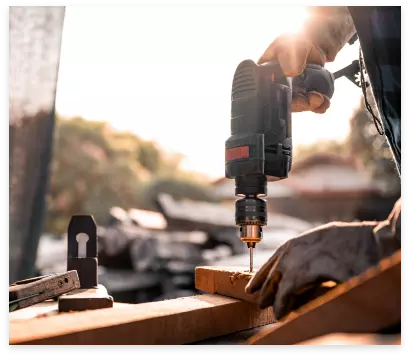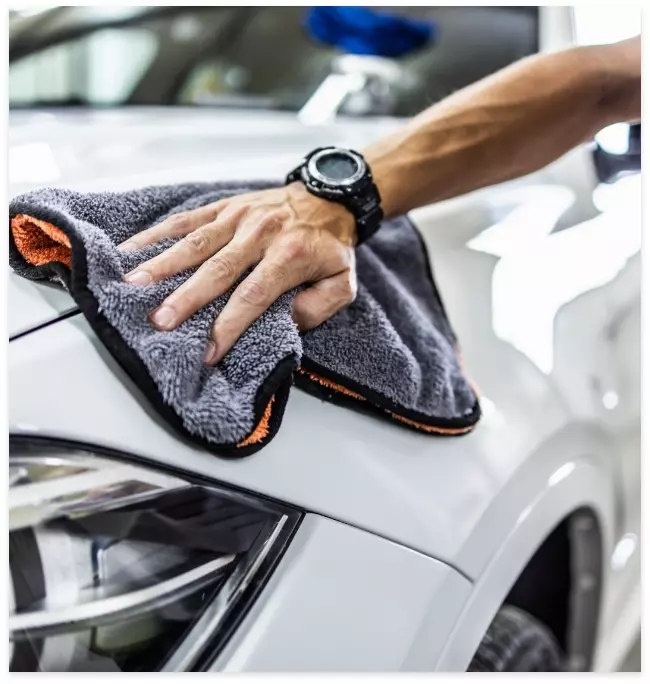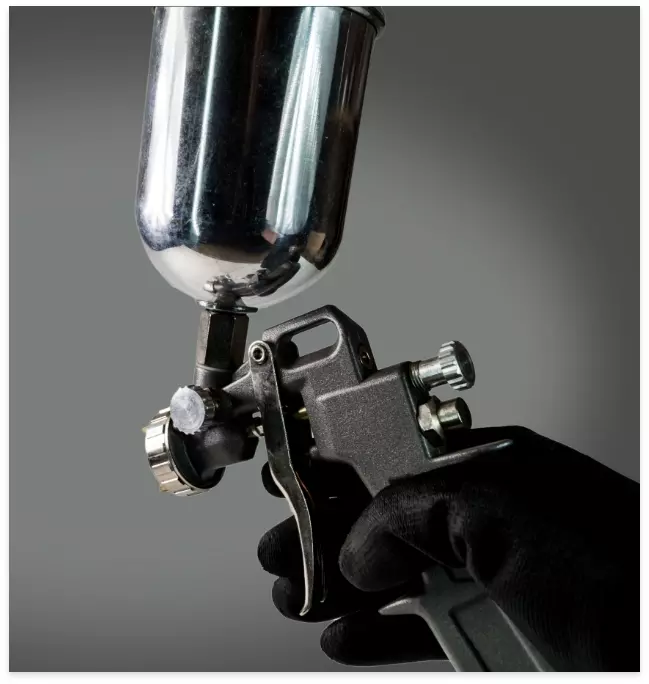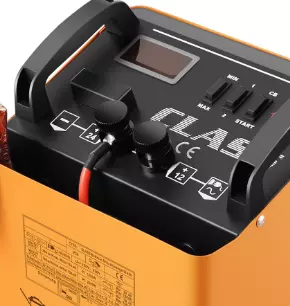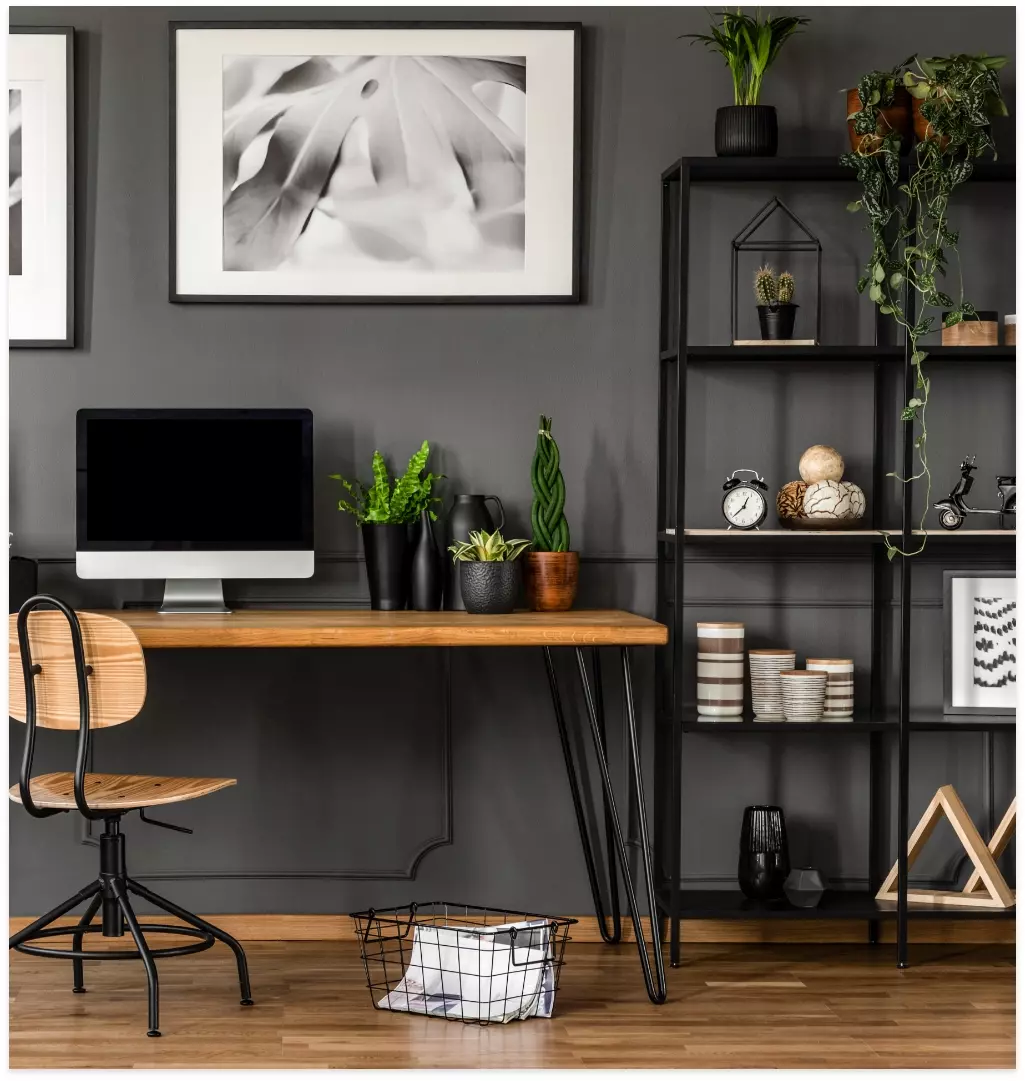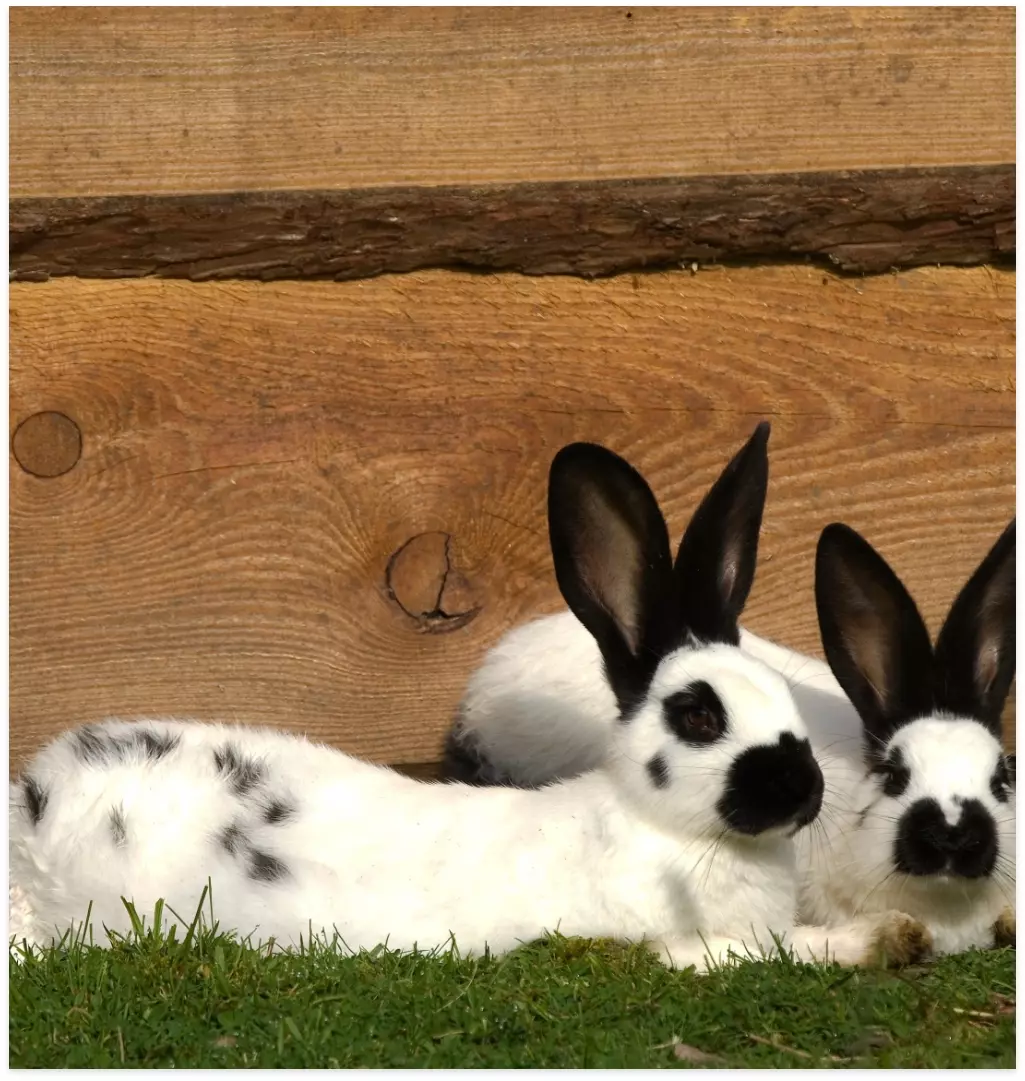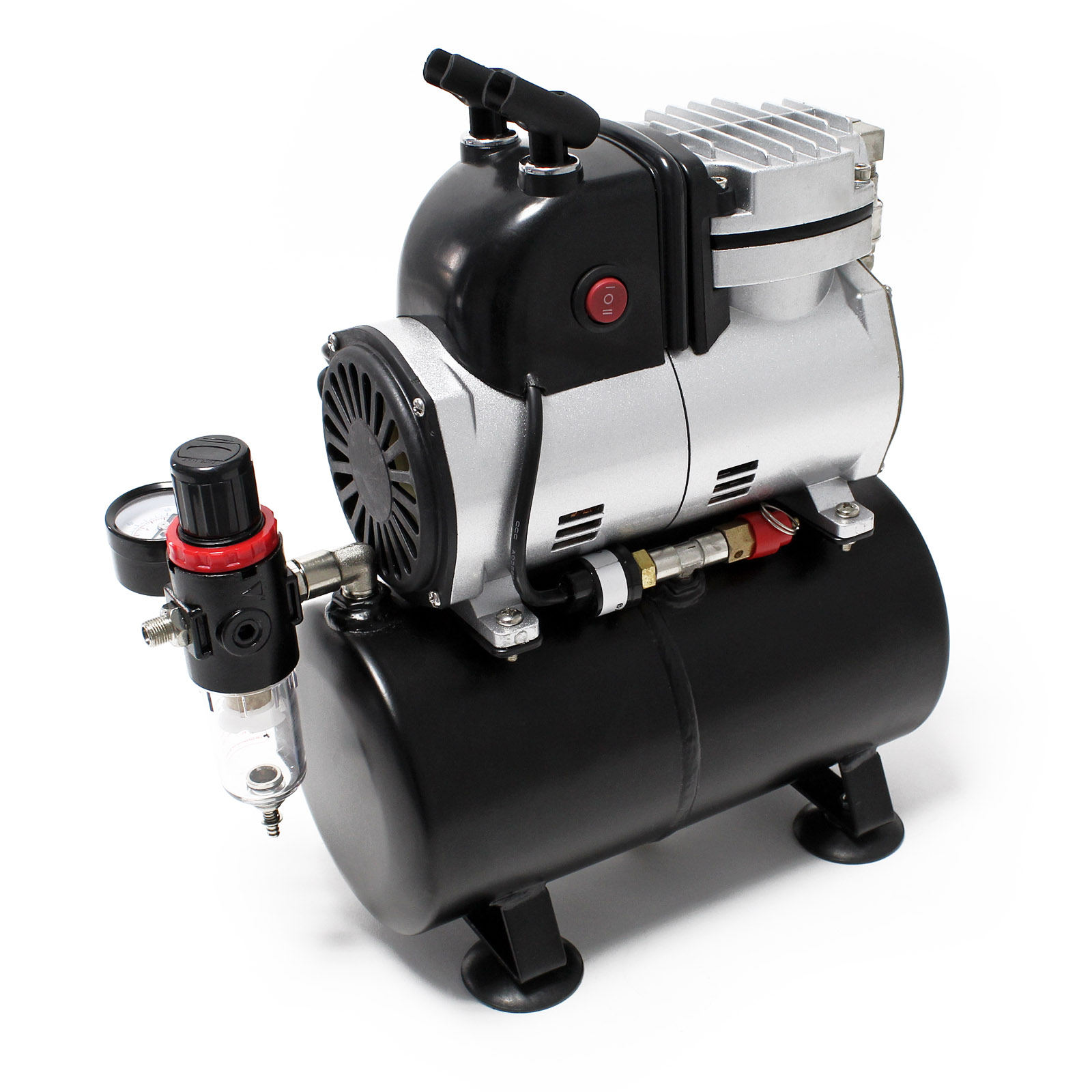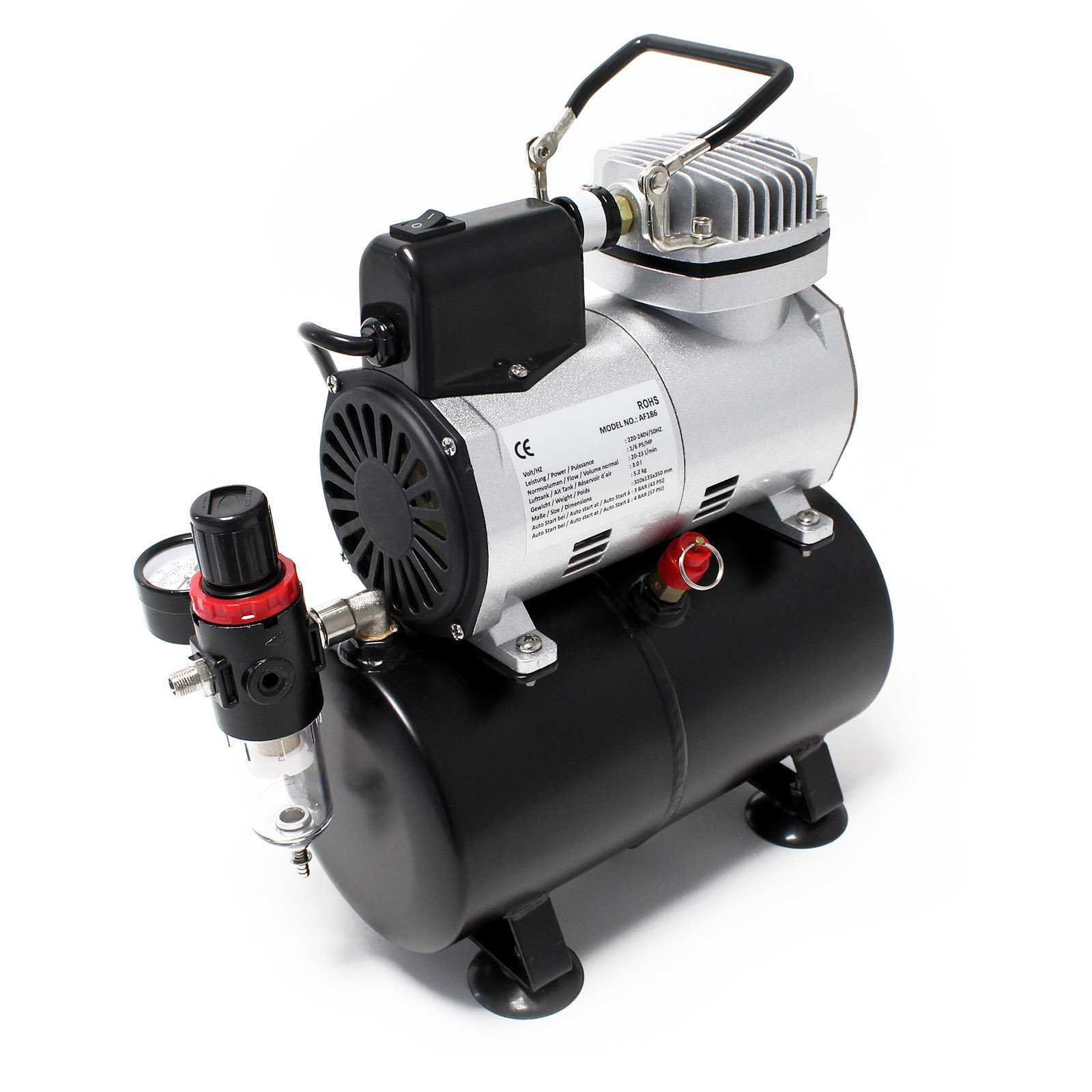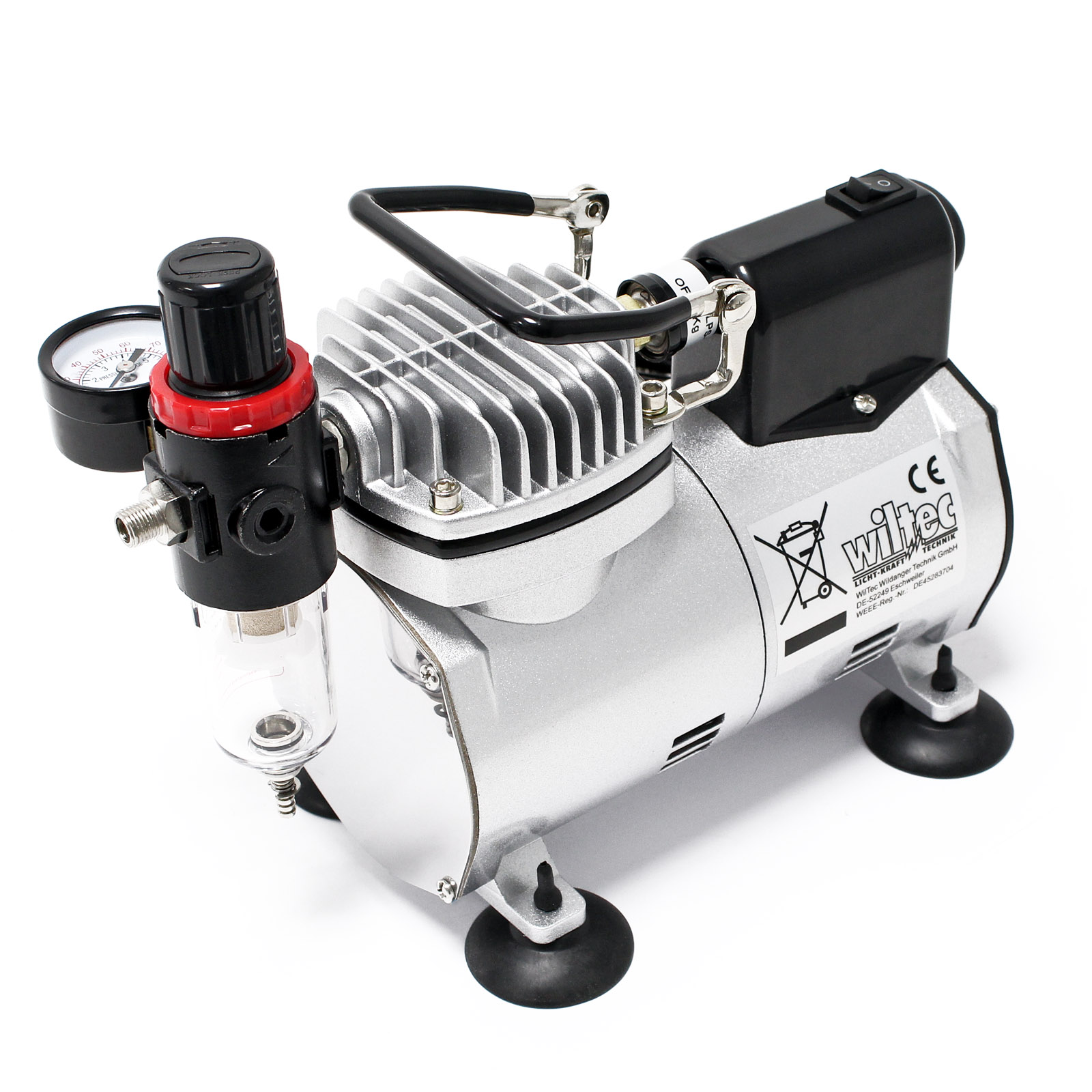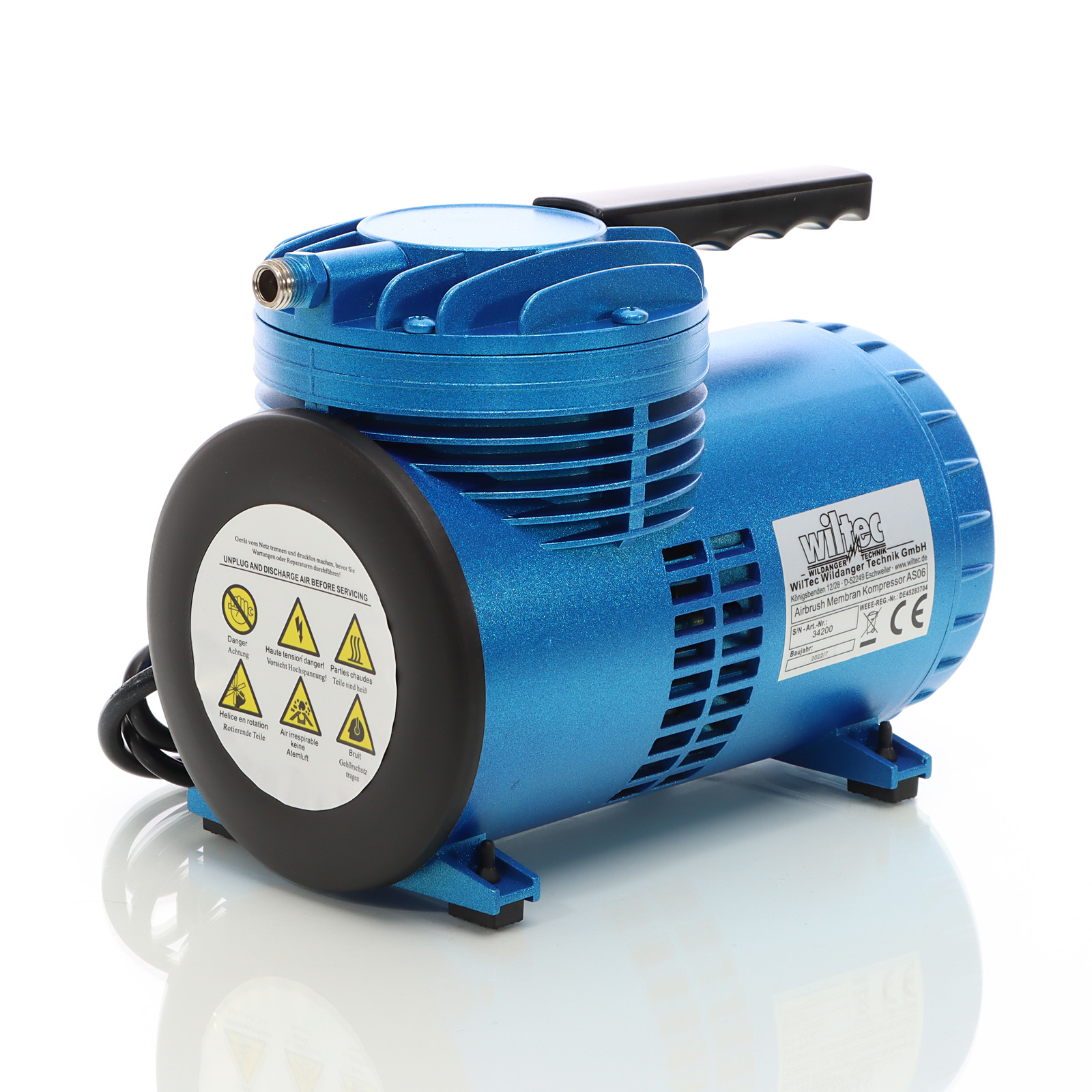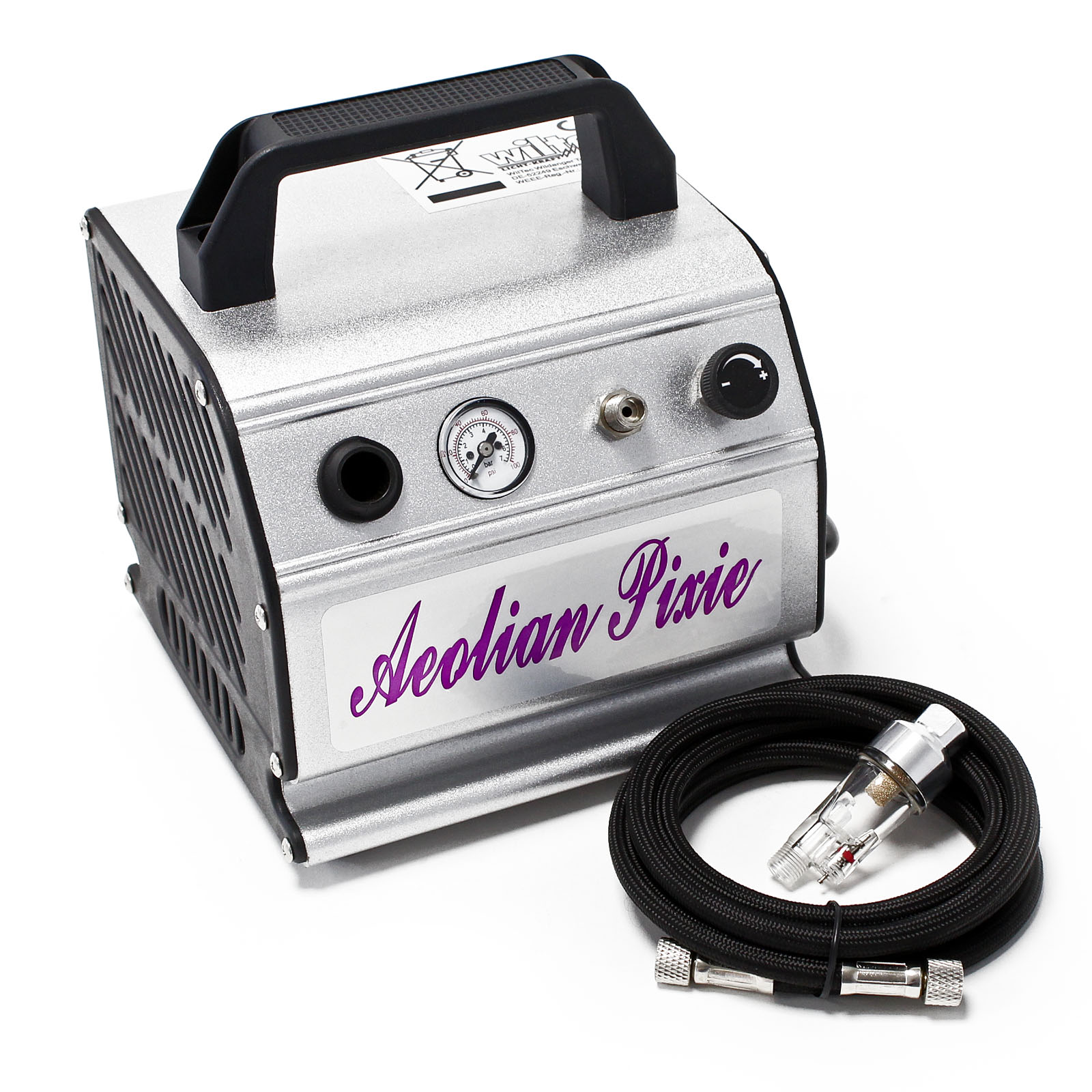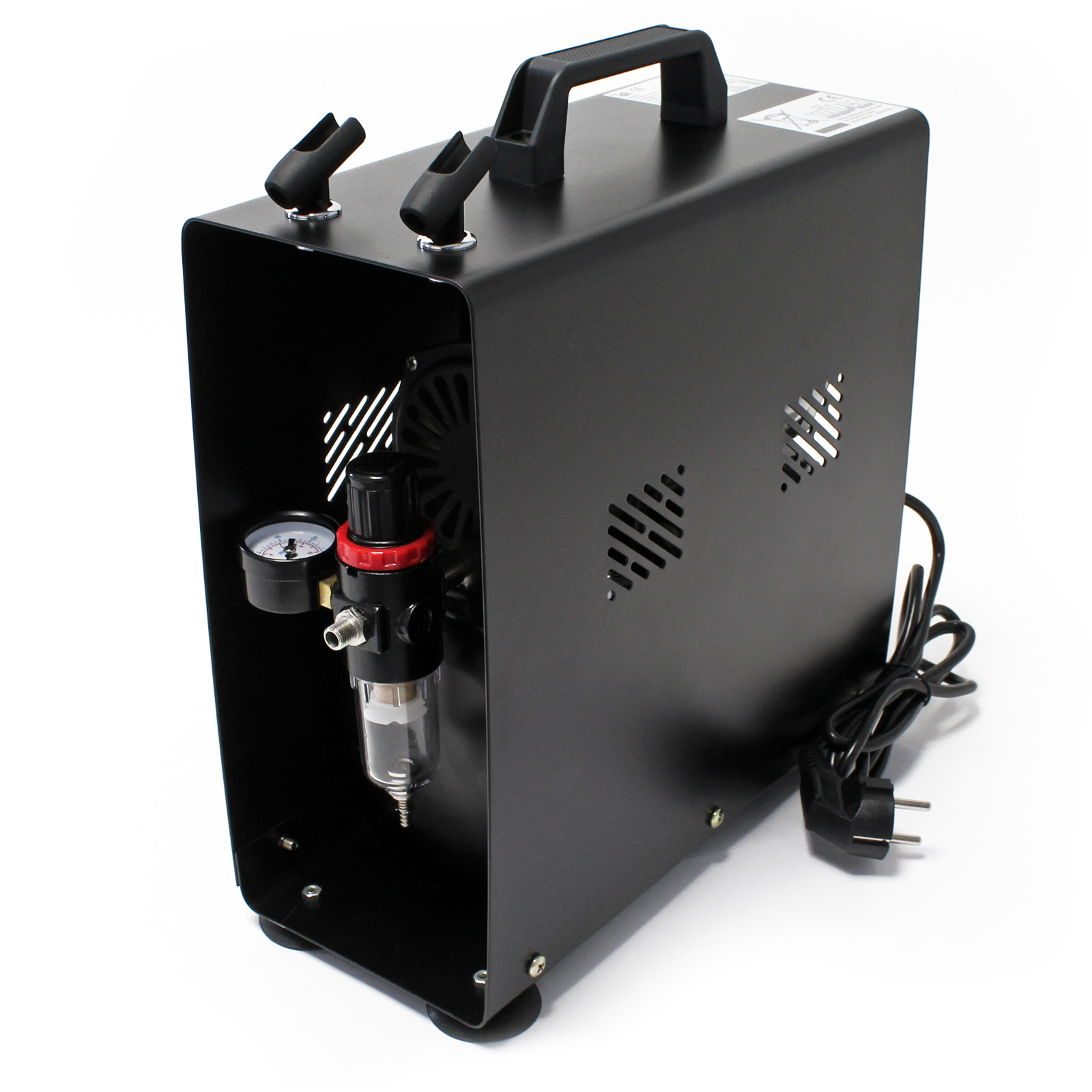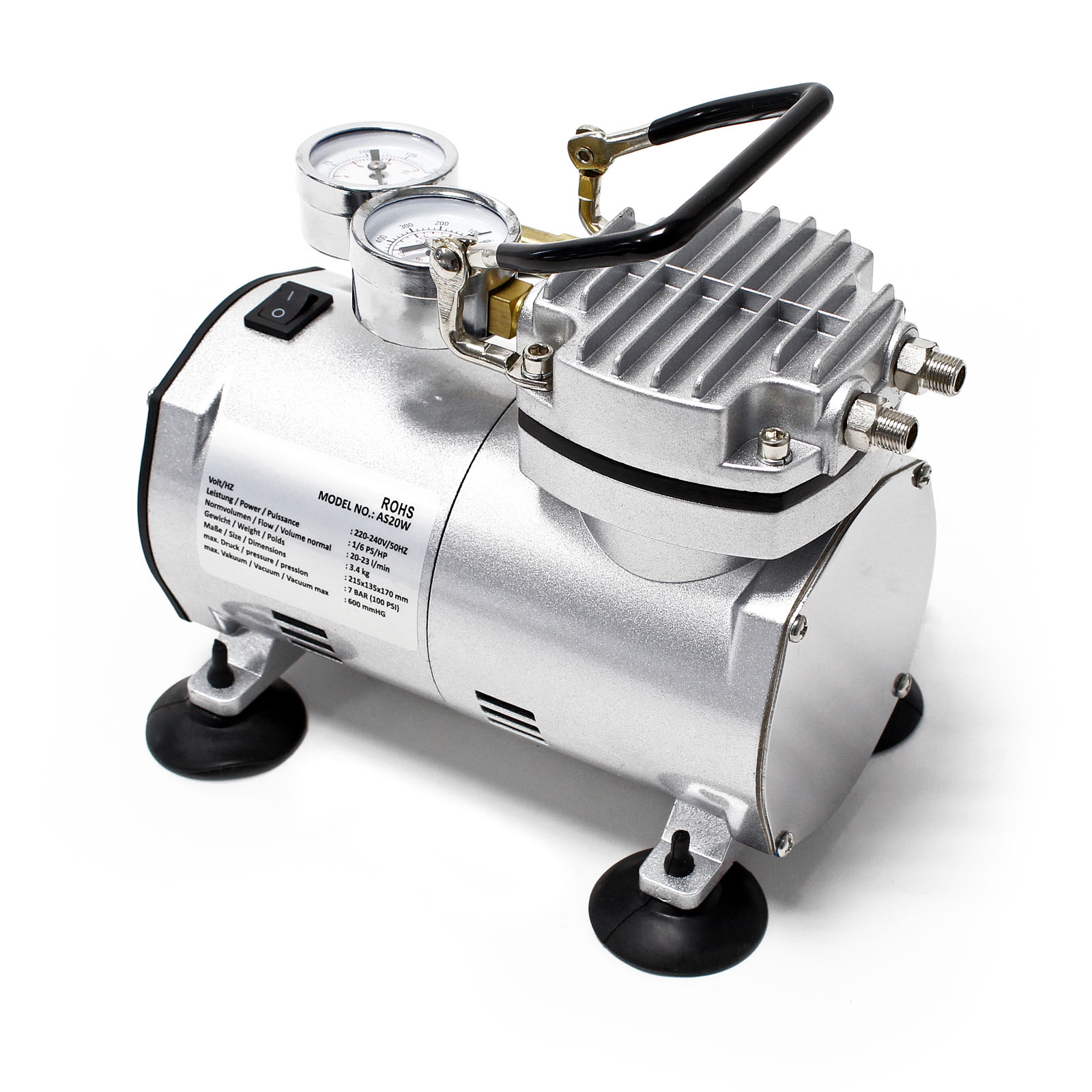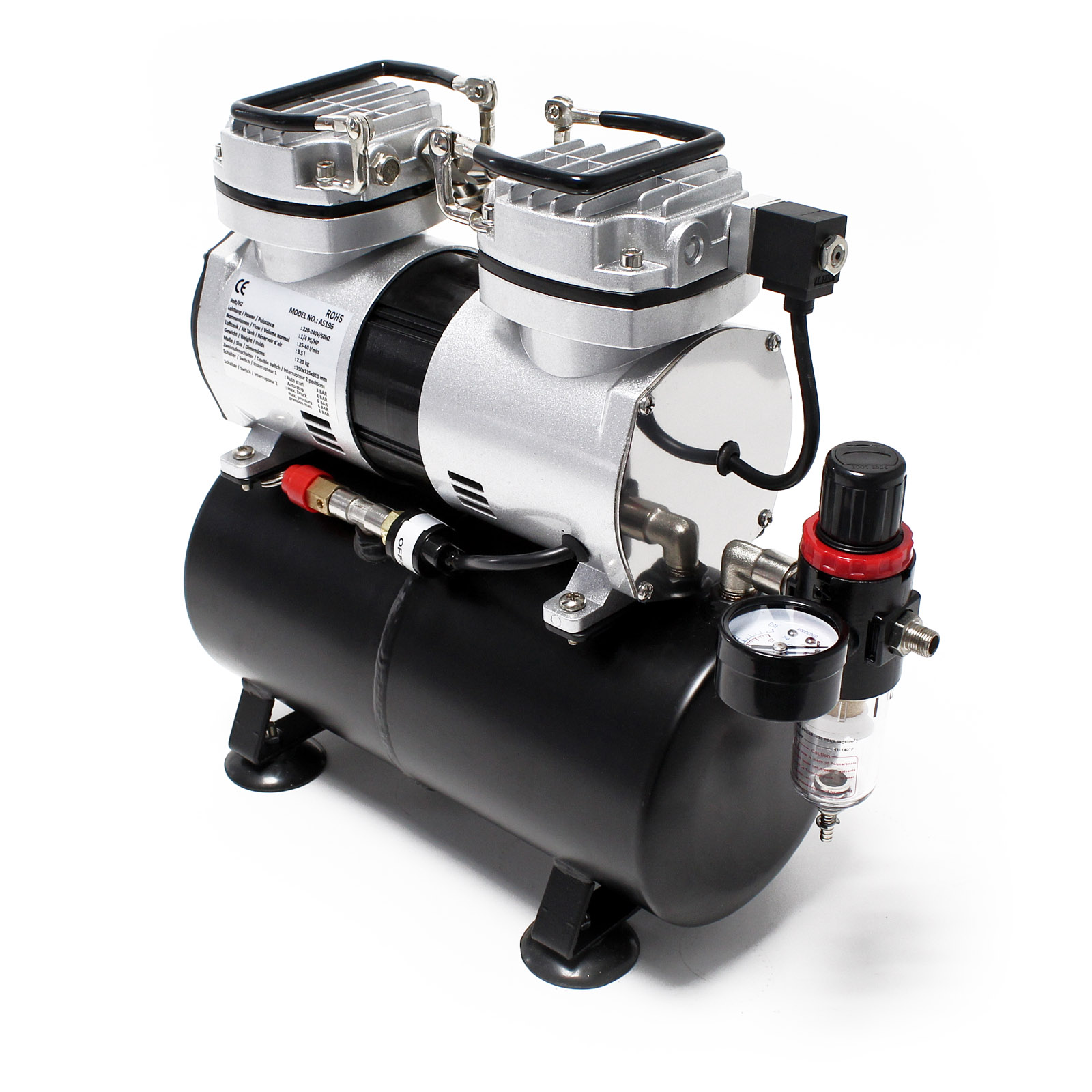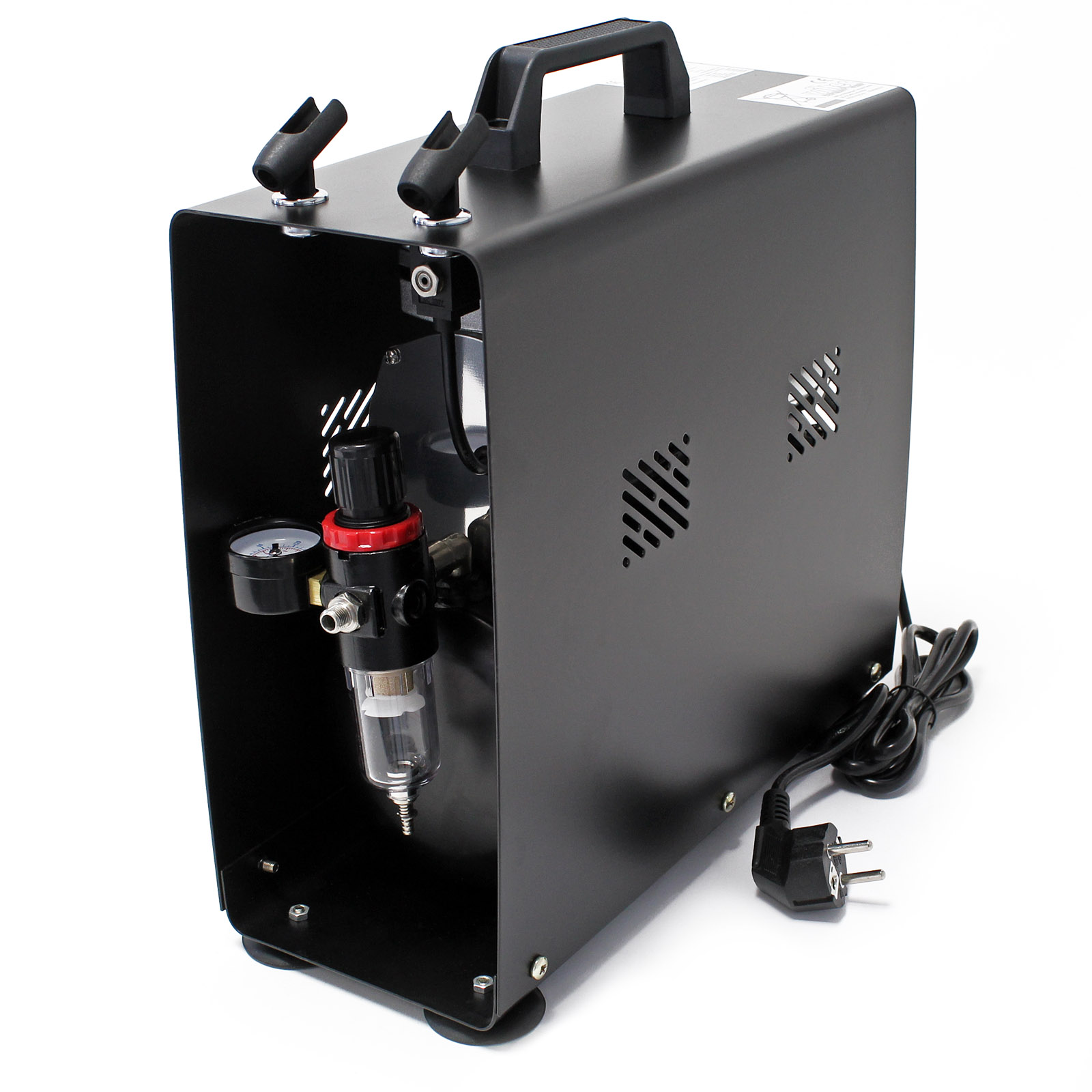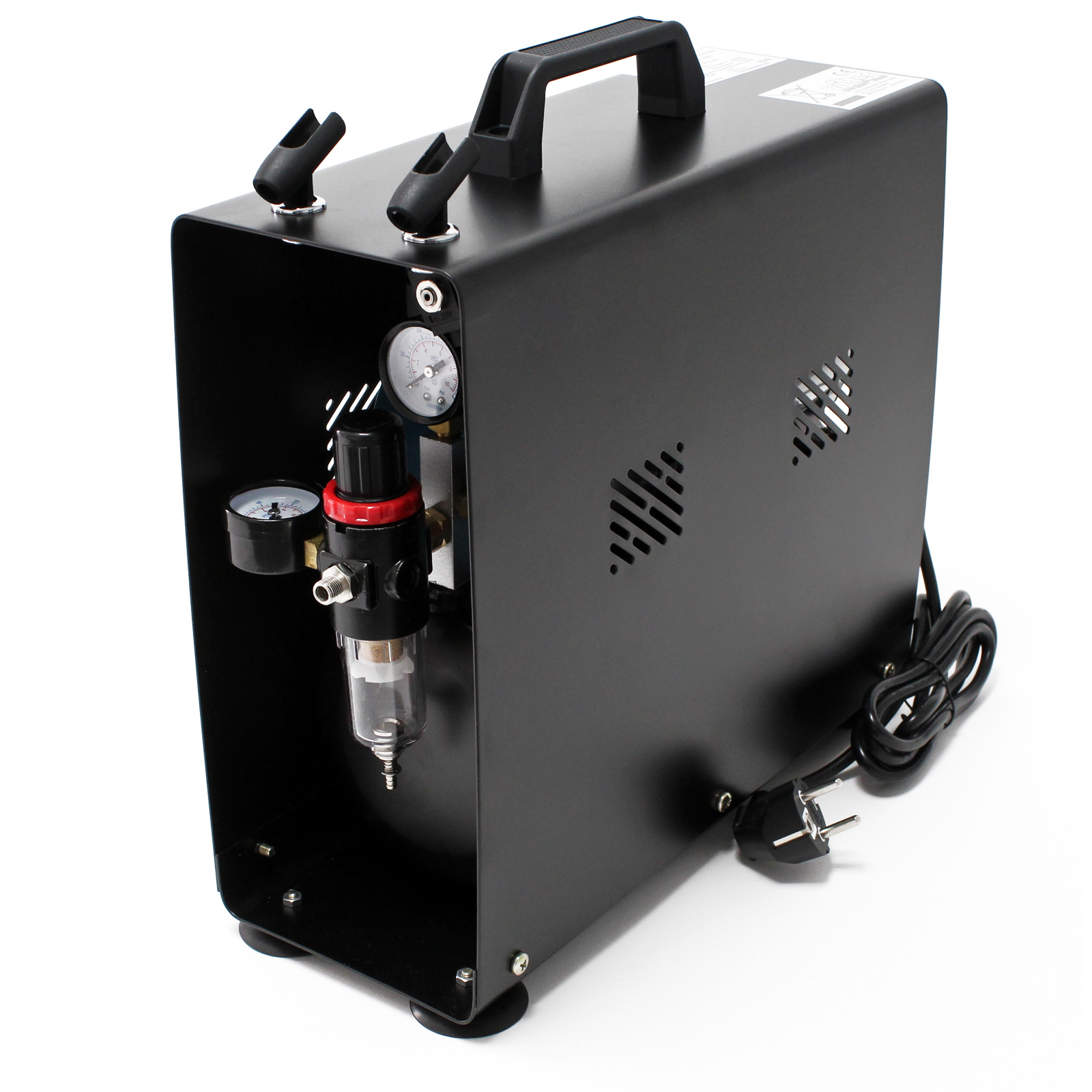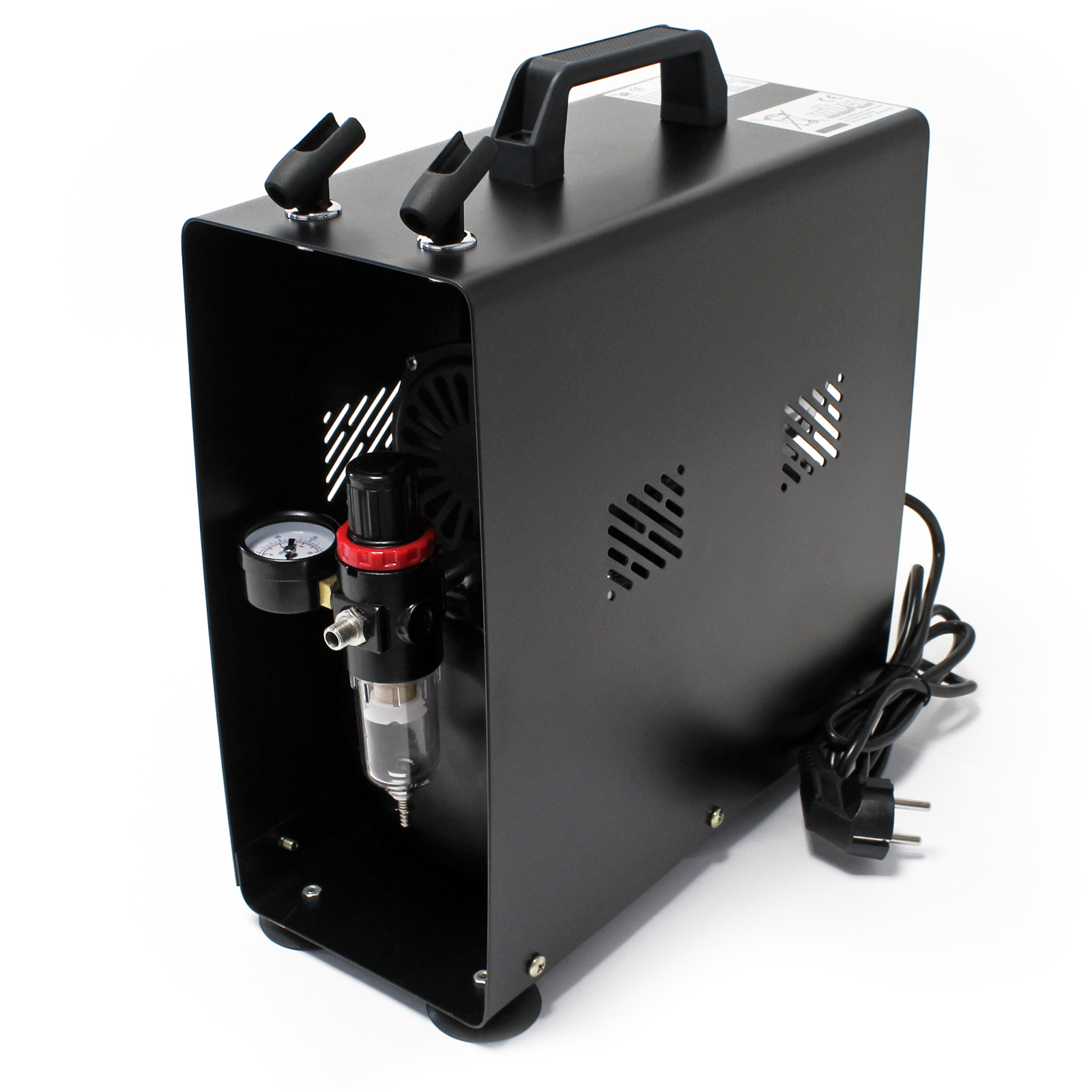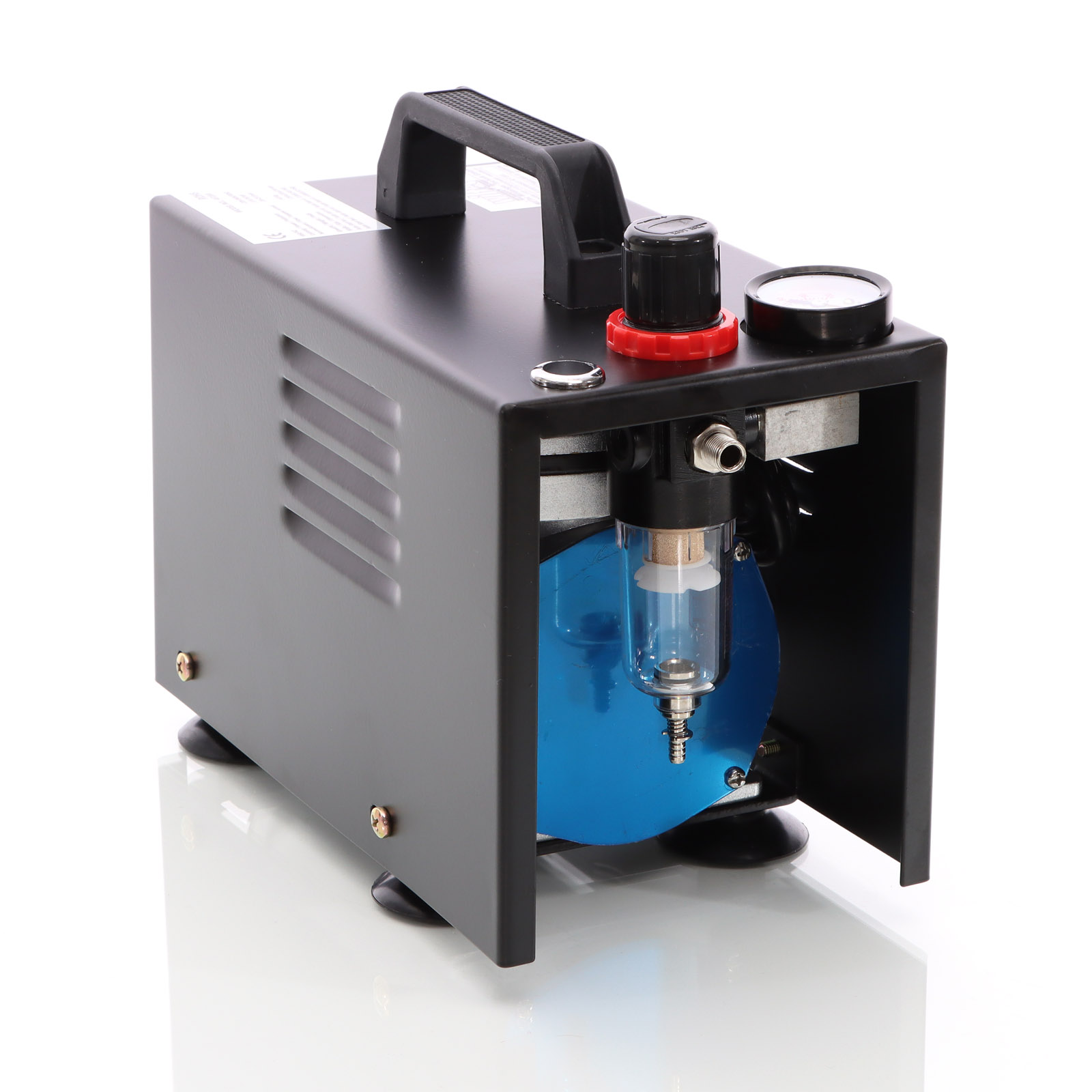Available, delivery time: 2 - 3 days
• Unit is suitable for various airbrush works
• Device has very low-noise operation
• Completely oil-free operation
• Max. pressure 6 bar
Available, delivery time: 2 - 3 days
• Device has very low-noise operation
• Completely oil-free operation
• Max. pressure 4 bar
Available, delivery time: 2 - 3 days
• Unit is suitable for various airbrush works
• Device has very low-noise operation
• Completely oil-free operation
• Max. pressure 4 bar
Available, delivery time: 2 - 3 days
• Suitable for various airbrush painting works
• Very low-noise device with only 40 dB
• Completely oil-free operation
• Max. pressure 3.5 bar (50 psi)
Available, delivery time: 2 - 3 days
• Suitable for various airbrush works
• Very low-noise device
• Completely oil-free operation
• Max. pressure 3 bar
Available, delivery time: 2 - 3 days
• Unit is suitable for various airbrush works
• Device has very low-noise operation
• Completely oil-free operation
• Max. pressure 6 bar
Available, delivery time: 2 - 3 days
• Suitable for various airbrush works
• Very low-noise device
• Completely oil-free operation
• Max. pressure 4 bar
Available, delivery time: 2 - 3 days
• Unit is suitable for various airbrush works
• Device has very low-noise operation
• Completely oil-free operation
• Max. pressure 6 bar
Available, delivery time: 2 - 3 days
• Unit is suitable for various airbrush works
• Device has very low-noise operation
• Completely oil-free operation
• Max. pressure 6 bar
Available, delivery time: 2 - 3 days
• Unit is suitable for various airbrush works
• Device has very low-noise operation
• Completely oil-free operation
• Max. pressure 6 bar
Available, delivery time: 2 - 3 days
• Unit is suitable for various airbrush works
• Device has very low-noise operation
• Completely oil-free operation
• Max. pressure 4 bar
Available, delivery time: 2 - 3 days
• Unit is suitable for various airbrush works
• Device has very low-noise operation
• Completely oil-free operation
• Max. pressure 4 bar
Exploring the World of Airbrush Compressors
The world of airbrush compressors is vast and varied, offering a wide range of options to meet the diverse needs of artists, hobbyists, and industrial users. An airbrush compressor is an essential tool that provides the steady, controlled airflow necessary for airbrush operation. These compressors ensure that airbrushes can produce fine, detailed work by maintaining a consistent pressure, which is crucial for achieving smooth and even results.
Airbrush compressors come in various types and specifications tailored to different applications. From compact, portable models designed for hobbyists and small-scale projects to powerful, industrial-grade units built for large-scale tasks, the selection is extensive. Each type of compressor has its unique features and benefits, making it important to understand their differences to choose the right one for your needs.
The versatility of airbrush compressors extends to their applications. Artists use them for creating intricate paintings and murals, while hobbyists rely on them for model painting and other detailed crafts. Makeup artists benefit from airbrush compressors' ability to apply makeup evenly and flawlessly, providing a professional finish. In the industrial sector, these compressors are used for tasks such as automotive detailing, furniture painting, and other large-scale projects requiring precision and consistency.
Understanding the various aspects of airbrush compressors, from their types to their uses, is crucial for anyone looking to enhance their airbrushing skills or improve their project's quality. Whether you're a beginner or a seasoned professional, the right airbrush compressor can significantly impact your work's outcome, making it an indispensable tool in your creative arsenal.

Discover Our Top Airbrush Compressor: AF189 Single Cylinder Piston Compressor
The AF189 Single Cylinder Piston Compressor with 6 bar is a standout product in this category. Known for its robust performance and reliability, this compressor is ideal for both beginners and professionals.
With a 6 bar pressure capability, it provides consistent airflow for detailed airbrushing tasks. Its single-cylinder design ensures durability, while the piston mechanism delivers a smooth, pulsation-free output.
This compressor is suitable for a variety of applications, including model painting, makeup, and hobby projects, making it a versatile addition to your toolkit.
The AF189 is designed with user convenience in mind, featuring an easy-to-read pressure gauge and a simple on/off switch.
Additionally, it includes a moisture trap to ensure clean, dry air, which is crucial for achieving high-quality finishes. This compressor's compact size allows for easy storage and transport, making it a practical choice for both home and professional use.
Airbrush compressors are incredibly versatile, finding applications across a wide range of fields, from the creative arts to industrial tasks. In the art world, these compressors are essential tools for achieving detailed airbrushing in paintings, murals, and illustrations. They allow artists to apply fine, controlled lines and smooth gradients, enhancing the precision and quality of their work.
Hobbyists also benefit greatly from airbrush compressors, especially in model painting where precision and control are crucial. These compressors enable enthusiasts to create intricate designs and realistic finishes on miniature models, scale replicas, and other detailed projects.
In the realm of beauty, airbrush compressors are a staple for makeup artists. They provide a flawless, even application of makeup, resulting in a professional, long-lasting finish that is difficult to achieve with traditional methods. This technology is particularly popular in the film and television industry, where high-definition results are essential.
Industrial applications of airbrush compressors are equally diverse. They are used for painting large surfaces, automotive detailing, and tasks that require consistent airflow and precision. These compressors ensure a uniform application of paint or coating, improving the efficiency and quality of the work.
Beyond these common uses, airbrush compressors are also employed in cake decorating, allowing decorators to apply fine details and gradients with precision. In the fashion industry, they are used to create custom fabric designs and intricate patterns on clothing.
The healthcare sector benefits from airbrush technology as well, utilizing it for the precise application of medical coatings and treatments. This wide range of applications highlights the indispensable nature of airbrush compressors in both creative and industrial fields, demonstrating their adaptability and importance in various professional and hobbyist environments.
Choosing the Right Airbrush Compressor for Beginners
When selecting an airbrush compressor for beginners, keep these key factors in mind to ensure a smooth and enjoyable learning experience:
- Ease of Use: Look for models that are simple to operate and maintain, such as mini airbrush compressors or starter kits with compressors.
- Quiet Operation: Opt for compressors with low noise levels, ideal for home use and shared living spaces.
- Compact Design: Choose a compact compressor that won't take up too much space in your studio or workspace.
- Helpful Resources: Ensure the compressor comes with a comprehensive instruction manual and good customer support. Some models also offer instructional videos or online tutorials.
- Affordable Quality: While cost is important, invest in a moderately priced, reputable brand to avoid frustration and additional costs later. Reliable brands often provide better warranties and customer service.
- Compatibility: Select a compressor that works with various airbrushes and accessories. This flexibility allows you to experiment with different techniques and expand your skills without needing to upgrade equipment immediately.
- Essential Features: Look for features like automatic shut-off, pressure regulation, and a moisture trap to enhance the user experience and ensure better results.
By considering these factors, beginners can find the right compressor that meets their needs and helps them develop their airbrushing skills. With the right equipment, you can explore your creativity and achieve professional-looking results from the start.
Introducing the Airbrush Diaphragm Compressor AF18-2
Another excellent product in this category is the Airbrush Diaphragm Compressor AF18-2. This compressor features a 4 bar pressure capacity, an automatic switch-off function, and a pressure gauge. The diaphragm design ensures quiet operation, making it ideal for indoor use or in noise-sensitive environments.
The automatic switch-off feature adds a layer of safety and efficiency, preventing overuse and conserving energy. The integrated pressure gauge allows users to monitor and adjust the airflow precisely, ensuring optimal performance for various airbrushing tasks.
This compressor is perfect for artists and hobbyists looking for a reliable and efficient airbrushing solution. Its compact design makes it easy to transport and store, while the built-in thermal protection ensures longevity and durability.
The AF18-2 is compatible with a wide range of airbrushes, making it a versatile addition to any artist's toolkit. Its low maintenance requirements and robust construction make it a reliable choice for both beginners and experienced users.
What Size Air Compressor Do I Need for Airbrushing?
The size of the air compressor needed for airbrushing depends on the specific requirements of your projects. For most airbrushing tasks, a compressor with a tank size between 1 to 6 liters and a pressure capacity of 2 to 6 bars is sufficient. This range provides enough airflow for smooth and consistent airbrushing, whether you are working on small models or larger canvases. For professional applications, such as automotive detailing or large-scale murals, a larger tank size and higher pressure capacity may be necessary.
It's important to match the compressor's specifications with the demands of your airbrush and the complexity of your projects. Using a compressor with inadequate capacity can lead to inconsistent airflow and subpar results, while an overly powerful compressor may be unnecessarily bulky and expensive. Consulting with experienced airbrush users or professionals can also provide valuable insights into selecting the right compressor size for your needs.

The Best Airbrush Compressor for Miniature Painting
For miniature painting, precision and control are paramount. An airbrush and compressor kit for miniatures or a quiet airbrush compressor with a tank is ideal. These compressors provide steady airflow and fine control, allowing for detailed and delicate work on small surfaces. Look for features such as adjustable pressure settings, which can help achieve the desired level of detail and smoothness. A compact and quiet compressor ensures that you can work comfortably for extended periods without noise disturbance. Additionally, consider compressors with moisture traps to prevent any water contamination in the airflow, which is crucial for achieving high-quality finishes on miniatures. Investing in a high-quality airbrush compressor can significantly enhance your miniature painting experience, allowing for more intricate and professional-looking results.
Types of Airbrush Compressors
Airbrush compressors come in various types, each designed to meet specific needs and applications. Understanding these types can help you choose the right compressor for your projects, ensuring optimal performance and efficiency.
- Diaphragm Compressors: Diaphragm compressors are known for their quiet operation and simplicity. They use a flexible diaphragm to compress air, making them ideal for small to medium-sized projects where noise is a concern. These compressors are typically compact and lightweight, making them easy to transport and store. They are well-suited for hobbyists and artists who need a reliable yet quiet compressor for detailed work. Diaphragm compressors are also relatively low-maintenance, which adds to their appeal for beginners and occasional users.
- Piston Compressors: Piston compressors are more powerful than diaphragm compressors and are capable of handling larger tasks. They use pistons to compress air, which allows them to generate higher pressures and provide a more consistent airflow. Piston compressors often come with tanks, which help to smooth out the airflow and reduce pulsation. This makes them ideal for continuous, high-demand applications such as automotive detailing, large-scale murals, and industrial painting. While they tend to be noisier and require more maintenance, their performance and reliability make them a popular choice among professional users.
- Mini Airbrush Compressors: Mini airbrush compressors are compact and portable, designed for on-the-go projects and small-scale airbrushing. These compressors are perfect for hobbyists, model painters, and artists who need a lightweight and easy-to-carry compressor. Despite their small size, mini airbrush compressors can deliver sufficient pressure and airflow for detailed and precise work. They are typically used for temporary setups, quick touch-ups, or situations where space is limited. Their portability makes them a convenient choice for workshops, craft fairs, and other mobile settings.
- Cordless Airbrush Compressors: Cordless airbrush compressors offer the ultimate in portability and convenience. These battery-operated units eliminate the need for power cords, making them highly versatile for outdoor projects or locations without easy access to electrical outlets. Cordless compressors are ideal for makeup artists, cake decorators, and anyone who needs the freedom to move around without being tethered to a power source. They are designed to be lightweight and easy to handle, providing consistent performance even in remote settings.
- Industrial Airbrush Compressors: Industrial airbrush compressors are designed for heavy-duty applications and high-volume usage. These compressors are built to withstand rigorous conditions and provide reliable performance over extended periods. They typically feature larger tanks, higher pressure capacities, and robust construction, making them suitable for tasks such as automotive painting, large-scale commercial projects, and other demanding applications. Industrial compressors may include additional features like multiple outlets, advanced cooling systems, and enhanced durability to support continuous use.
By understanding the different types of airbrush compressors, you can select the one that best fits your specific needs, whether you're a hobbyist looking for a quiet and compact unit or a professional requiring a powerful and durable compressor for industrial tasks.

What’s the Best Airbrush Compressor?
The best airbrush compressor depends on the user's needs and preferences. For general use, hobby or portable airbrush compressors are versatile and easy to use, suitable for various tasks from art to DIY projects. For more demanding applications, industrial airbrush compressors offer the power and reliability needed for heavy-duty tasks, featuring high-pressure capabilities, large tanks, and robust construction. Key factors to consider when choosing include airflow, pressure, noise level, and portability, as well as compatibility with your airbrush and specific project requirements.

The Ideal Airbrush Kit for Your Needs
Choosing the right airbrush kit depends on your specific needs. For model painting, an airbrush kit designed for models typically includes a compressor, airbrush, and accessories for detailed work. Makeup artists should opt for an airbrush makeup kit tailored for cosmetic applications. For industrial tasks like automotive detailing or large-scale painting, an industrial airbrush compressor with a tank is best. Consider factors such as ease of use, portability, and availability of replacement parts. Reading reviews and getting recommendations from experienced users can also help in making a well-informed choice.

Which Compressor is Best for Airbrush?
When selecting a compressor for airbrush use, consider factors like airflow, pressure, noise level, and portability. A quiet compressor with a tank is often preferred for steady airflow with minimal noise, ideal for indoor or low-noise environments. For mobility, a cordless airbrush compressor offers convenience without sacrificing performance, being battery-operated and lightweight. Additionally, ensure the compressor is compatible with your airbrush and meets the specific requirements of your projects.
Summary
The world of airbrush compressors offers a wide range of options to meet the diverse needs of artists, hobbyists, and industrial users. These compressors provide the controlled airflow necessary for precise airbrushing, from compact models for hobbyists to powerful industrial units for large-scale tasks. Notable products include the AF189 Single Cylinder Piston Compressor, ideal for both beginners and professionals with its robust performance and versatility, and the Airbrush Diaphragm Compressor AF18-2, known for its quiet operation and efficiency. Understanding these aspects can enhance your airbrushing skills and improve project quality, making the right compressor an essential tool in your creative toolkit.


